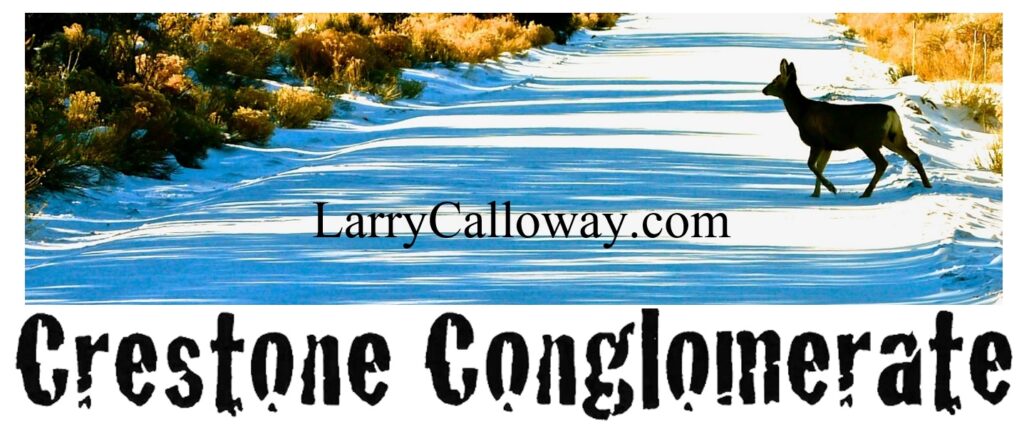A bitter competition between skiers and snowmobilers that did not exist the last time there was this much snow in southwest Colorado, about 12 or 13 years ago, has revved up in the San Juan Mountains. It’s a fight over the New West’s new commodity: deep virgin powder.
And it was forced into the headlines by the Old West’s oldest dispute resolution device: a shotgun.
The shotgun was the kind that breaks open at the breach. A National Rifle Association advertisement used to show Charlton Heston’s defiant profile with a similarly open double-barrel shotgun resting on his right shoulder. It was a symbol of both power and responsibility.
So when Tim Kuss of El Diablo Alpine Guides, a snowcat skiing operation, confronted snowmobilers in his special permit area with an open shotgun across his knees, he was exercising a God-given NRA right. No?
But the other side, the usually conservative Republican snowmobilers headquartered in Silverton, painted Kuss armed and dangerous. Suddenly instead of being tree-hugging liberals, backcountry skiers were gunslingers.
This was an opening for political pressure, and it is heavy in the former mining town where the mayor is also president of the snowmobile club. The county commission even started asking questions of the uncomfortable U.S. Forest Service, the administrative agency on Molas Pass.
In a letter to the Silverton Standard, Laura Alsop, wife of an affluent snowmobile activist, complained: “When the Forest Service was asked what they were going to do about one of their permittees wielding a shotgun, I was told that you could carry a firearm as long as it’s not concealed and federal, state and local laws aren’t violated. And use it to intimidate people? This is no comfort for a popular winter recreation area.”
Kuss did not respond immediately, but a week or two later he told the Durango Herald he had felt threatened by snowmobilers in the past who “became pretty violent right off the bat.”
One the other hand, snowmobiler Adam DeVeny of Silverton felt threatened by Kuss even though, all agree, the gun was never loaded, locked or pointed an anybody. “He said it was an A-area (closed to motor vehicles), and he said we were on his ski hill,” DeVeny said of Kuss. When he got back to the highway he called the sheriff.
Deputy Edward Reinhardt wrote in his report that he told Kuss bringing a gun into an argument could be considered menacing. Deputy District Attorney Todd Norvell announced later he would not prosecute, saying, “I think his conduct was certainly not appropriate, but this doesn’t rise to a level we could prove without reasonable doubt.”
The remarkable winter has left snow piled as high as the eaves of some Silverton homes, and snowmobilers run free through the powder on the slopes around town. Publisher Jonathan Thompson of the Silverton Standard wrote: “Outfitters find it more and more difficult to find the virgin powder that was once plentiful, and their clients can instead end up skiing alongside the tracks of snowmobiles or skiers or snowboarders that accessed the area via snow machine.”
Silverton is acquiring an international reputation as a ski town, but of an unusual kind. Extreme skiers pay $100 a day for guided runs on Silverton Mountain, which is on avalanche-prone federal land administered by the federal Bureau of Land Management, strictly and clearly. The dispute does not involve this new one-chairlift area. Nor does it involve the big three resorts – Telluride, Durango, Wolf Creek – where if you see a snowmobile it’s on official business.
The battleground is along the winding paved highways, especially at high passes like Molas where extra lanes are plowed so you can park and unload your snowmobile, strap on snowshoes or climber skis or board Kuss’ tracked vehicle – all headed for the powder. On Molas Pass, as Thompson noted, the line between skiers and snowmobilers was pretty fuzzy. A sketch map handed out and posted by the Forest Service was the only guide, and the boundary on the West side of the highway did not follow natural features. A Forest Service snow ranger acknowledged the vague and arbitrary boundary exacerbated the conflict.
The snowmobile club has contributed to the confusion with its own liberal map, and the club has gone to court over a proposed Forest Service management plan. Work on the plan started in 2000. There have been meetings and more meetings. “As winter use of Molas Pass continues to grow, tensions will likely continue to escalate,” said Forest Service spokeswoman Ann Bond. “But we will continue to work with the community to try to find a solution.”
So give it another four or five years, as these government doings go. In the meantime, it would be interesting if a law-enforcement-minded ranger just went out and posted signs. It would calm things down. As they used to say in Texas, “One Ranger, one riot.”
